I would presume the reason you are reading this article is because, as the name of the website indicates, you want to Improve your Photography. So how does that work? What is it you need to learn? Who can help you learn it? How can you go from being a snapshooter to a photographic craftsman?
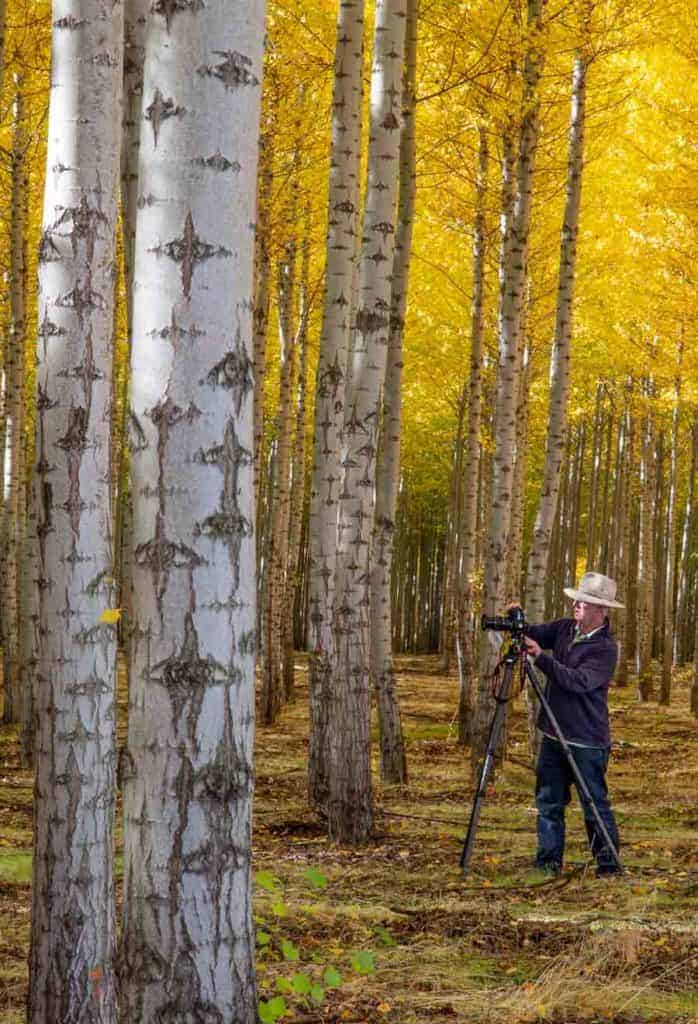
I am fortunate to have a fellow Boise Camera Club member, great friend, and exceptional landscape photographer who is my mentor and inspiration to reach for that next level. Someone to push me to develop what I see in his work – a “craftsman” mentality about my photography. Let me introduce you to Dan Mottaz.
Like myself and others “of a certain age,” Dan started his photography in the mid 70’s in high school. He actually started as a painter in watercolors and acrylics. He would use his Pentax Spotmatic with the stock 50mm lens to shoot images he could then paint. But he says he quickly found he enjoyed the photography all by itself.
“I quickly fell in love with photography and before long, gave up the painting altogether,” said Dan. “My mother, who had high hopes for me as a painter, wasn’t as thrilled,” he laughed. I was shooting mainly black and white 35mm film and I did that for a number of years, but then became interested in filmmaking and set still photography aside for a time.”
As video became more prevalent in that era, Dan turned his filmmaking skills and a Film Production degree from San Francisco State University into a career and he launched his own video production company in San Francisco making legal videos. He continued with that until he retired in 2010.
Also along about that time, digital photography was emerging. “That brought me back to still photography again,” said Dan. “I can remember it was about then that Photoshop 4.0 was out. I bought almost every book I could find on Photoshop and just read and read as much as I could. I was just really so interested in understanding how it worked,” he said. “I would get on the computer and I would learn one task at a time and that's what I tell people that want to understand or learn Photoshop. I tell them the best way I learned was to do one thing at a time and then, once you feel you've got that down, (and you can remember it when you come back to it after a couple of weeks), move on to the next task.”
Dan said it was the ability to clone out distractions that really captured his imagination. “I took a college extension course at San Francisco State in Photoshop and the instructor showed a before and after photo of City Hall where he’d used the clone tool to remove distracting telephone wires from the shot. I thought that was just magic!” he said. “There was no way that I knew of that you could do that with film and so that was it… I was hooked on Photoshop!”
It is that kind of excitement for learning and diligence to his craft that typifies how Dan approaches all of his photography. Just as much as a fine woodworker who can create beautiful works through his knowledge of the tools of his trade, skill with those tools, and dedication to detail, I regard Dan as a photography “craftsman.” With that in mind, I asked him how he related to the famous Ansel Adams quote:
“You don’t Take a Photograph, you Make it.” – Ansel Adams

“I think my art background has a lot to do with how I view this,” said Dan. “I remember an early workshop I took in the mid 2000’s from Mountain Light Photography out of Bishop, California, and they introduced me to the concept of pre-visualization,” said Dan. “At first, I interpreted that very literally and thought that meant that before you ever went to a location to shoot, you should already know in your head what you want. I learned later on that’s a good way to set yourself up for disappointment,” he said. “It’s never going to be the way it looks in your dreams.”
So what should you do to prepare for heading out on a photo trip?
Preparation
“Of course I get all my gear packed and ready making sure I have extra batteries, memory cards, have the lenses I want and so forth,” he said. “And then what I don’t do is go out on the web to see what everyone else has done. I don’t want that to impact my vision,” he said. “I don’t want to be emulating what other people have done. Maybe one reason may also be that it can intimidate me and I don’t want to be trying to compete with somebody else’s shot. That said, if I’m going to a place I’ve never been before, I may use the web to be able to get a sense of the lay of the land.”
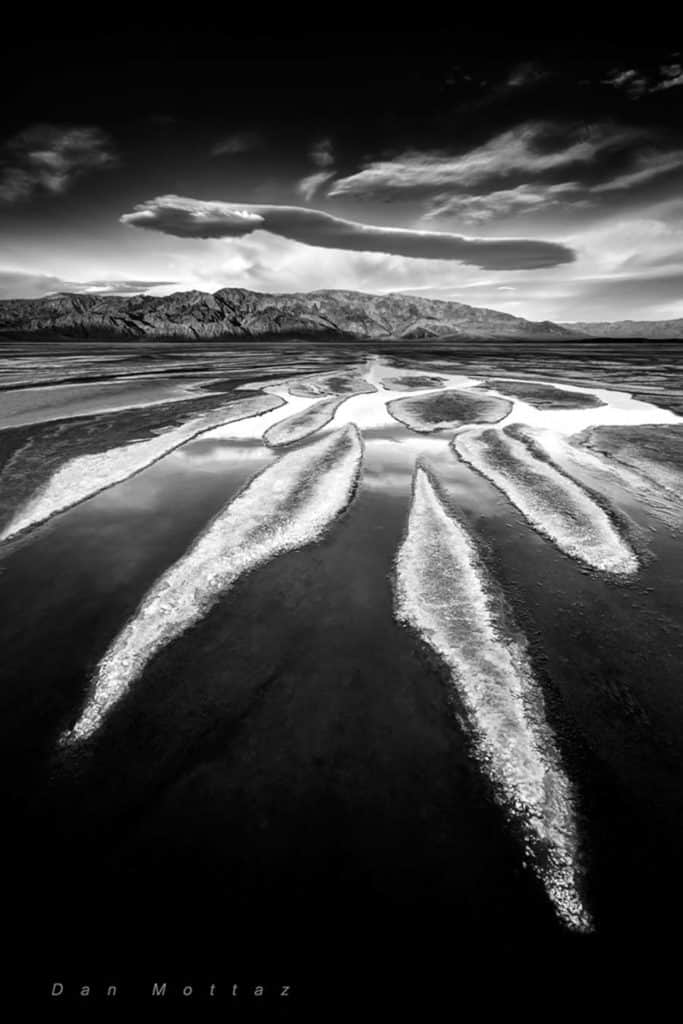
Dan says even better is to be able to go to a place simply to do a site survey and look things over. “Truthfully, some of my best shots are taken when I can go back to a place I’ve been many times before,” he said. “In some of those workshops I mentioned they’d say -‘just go to the place even without your camera. Set your behind on a rock and just kind of feel it. Smell the air, listen to the sounds, note what the other people around are doing, take note what's going on inside your head, just observe and take it all in.” he said. “So that's why it works for me to be able to come back to a place I've been to many times because I feel more of an emotional connection with it. Bandon, Oregon is that way for me, Death Valley, parts of the Eastern Sierra, spots where I feel like I have an emotional connection. When I return to a place like that it's like coming home in a way, it feels so comfortable and then I can do some of my best photography.”
Once on site
While some photographers will go to a site, see something they like, set up their tripod and start making shots, that’s not Dan’s approach. He spends lots of time looking things over, studying the scene, and finding a good composition.
“That’s because composition is everything. It trumps almost everything else that’s important to a photo,” said Dan. “If you have some minor technical problems, there’s a fair chance you can rescue the image if the composition is great. Don’t spend enough time creating a good composition however, and the image will never be great even if it’s technically perfect.”
Dan says his art background helps a lot in seeing good composition and he feels a certain part of it is almost a natural skill. Perhaps that some people naturally have “the eye” more than others. But he feels composition can be learned. He says one good way to do that is to take many variations of a shot, composed slightly differently.
“Memory is cheap,” he said. “Take lots of different shots and then when you get back home on the computer, study them. Look to see what works and what doesn’t. Maybe come back after a few days and view them fresh. Then, you’ll not only be learning what works compositionally, but in the dozens of shots you’ll probably have one that’s just right.”

Shooting for the edit
Some photographers, (me included), will often set up, find a composition, make a few snaps with varied exposures and slight variations, and be off to another spot. Not Dan. Maybe one of the biggest things I notice him doing when we’re out shooting is how he makes multiple shots of the same thing to give him additional options in editing. He will invariably shoot a 5-shot exposure bracket. He will often shoot the same shot focused at different spots in the frame. If the scene calls for it, he may use a Neutral Density (ND) graduated filter. This is because when he gets back to the computer, he will use the variations for such things as focus blending, multi-layer exposure compositing, and occasionally HDR. He knows even as he’s out shooting what his editing options are and wants to be sure he’s captured the “raw materials” to give him those options when he’s back on the computer. He explained how that works when creating a “near-far” image.

“When you use a wide-angle lens and have something prominent in the foreground and then something else, say a mountain range in the far background, that’s kind of a near-far thing,” he said. “So I focus on the far background and make a shot. I change focus to maybe the middle ground and make another shot and then focus on the close object and make a third shot. Later, I can manually blend the three images in edit and be sure I have sharp focus from front to back.”
Me? I’d figure a 16mm focal length and f/22 would give me plenty of depth-of-field to handle it, but Dan says, “Yeah, probably, but I want the insurance so that if it doesn’t, I have the pieces needed to be sure I can get what I want.”
Now repeat that kind of approach to bracketed exposures, using a graduated filter, shooting exposures “to the right”, and all the other things Dan considers and you can see he is not a “run-and-gun” photographer. It is that attention to detail, both in the field and in the edit, that typifies his craftsman-like approach to making superb photos.
Dan says he once worked like many of us, figuring taking a great variety of shots would help ensure getting a good one. Then he took a workshop where famous photographer Jack Dykinga was an instructor. “He watched me working and came over and said, ‘you’re too much of a butterfly, you need to plant yourself, wait for the light, then make your exposure.’ It took a while for me to fully appreciate that and understand, but today I thank him for that because I think it’s really improved my photography.”

The take-away – Quality is much more important than quantity. “If I go out on say an evening shoot and I only nail one really good shot, that’s success for me,” said Dan. “I’m really happy with just that.”
The Edit
Back at the computer, Dan’s attention to detail continues. Having spent countless hours using Photoshop, Lightroom is not Dan’s tool of choice for editing. He processes his Raw images with Adobe Camera Raw and then takes them into Photoshop. There, he will first work on what he calls the “structure.”
“It’s a clean-up step,” he said, “…where I clone out distractions be it sensor dust, pieces of trash, or other things which might take the viewers eye to places I don’t want it to go. “I then will work with the variations of the shot, the different exposures, focus spots, and so forth to make the final image a blending composite of the best pieces.”
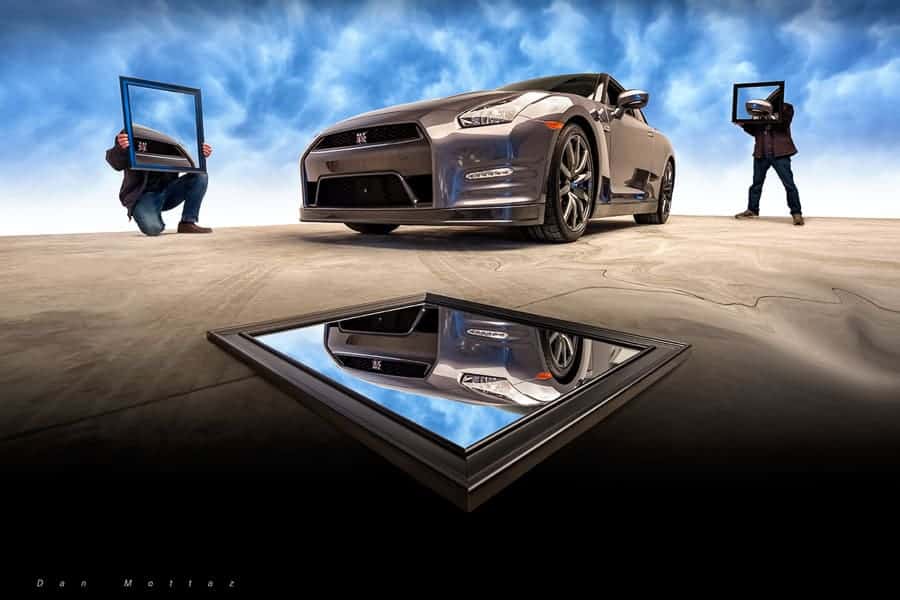
It can be time-consuming, but once again, it’s that craftsman thing. “I may spend hours and hours on one shot getting it just so, “ said Dan. “Some things don’t take quite as much, but then, on the other hand, I did a composite image of a car (above) a little while ago where I had at least 20 hours of editing in it. I’d have to stress though that the editing craft is just what gets me there. If I didn’t do a good job pre-visualizing the shot I wouldn't have anything to work with in edit.”
The Print
“The negative is the equivalent of the composers score, the print is the performance.”
– Ansel Adams

Dan’s attention to detail continues on through the printing phase. “The print is very important to me,” he said. “I’m a member of a gallery and will display my work there and at other venues when they come available. There is something about a print, it’s tangible, you can hold it in your hand versus looking at the image on a computer screen,” said Dan. “When I get done with editing and I feel the image is worth printing, I’ll make some test prints, usually small 4×6’s. Even then, often there are things that show up on the print I don’t see on the LCD screen. So it’s not uncommon for me to have to go back and make some tweaks after looking at the print,” he said. “My monitors are calibrated, I have printer profiles and do soft proofing, but there’s almost always some difference in brightness, tonality, contrast and such on the print so I need to adjust for that as well. I always consider myself lucky if it comes out perfect right out of the printer. It happens, but not often.”

Some people send their images off to a lab for printing and while that might be ok, Dan believes they are missing out on part of the photographic experience. “They are also giving up control,” he said. “If you get your print back and it doesn’t look just right or you think ‘hmmm, maybe I should have used different paper', you get to order another print and wait to see how it comes out. With your own printer you can immediately make adjustments and make another print,” he said. “Maybe if I had a local printer and a lot of money to make more prints if I didn’t like the first one I’d go that way, but I don’t. Besides, I like making prints.”
The Reason Why
“He who works with his hands is a laborer. He who works with his hands and his head is a craftsman. He who works with his hands and his head and his heart is an artist.”
― Francis of Assisi ―
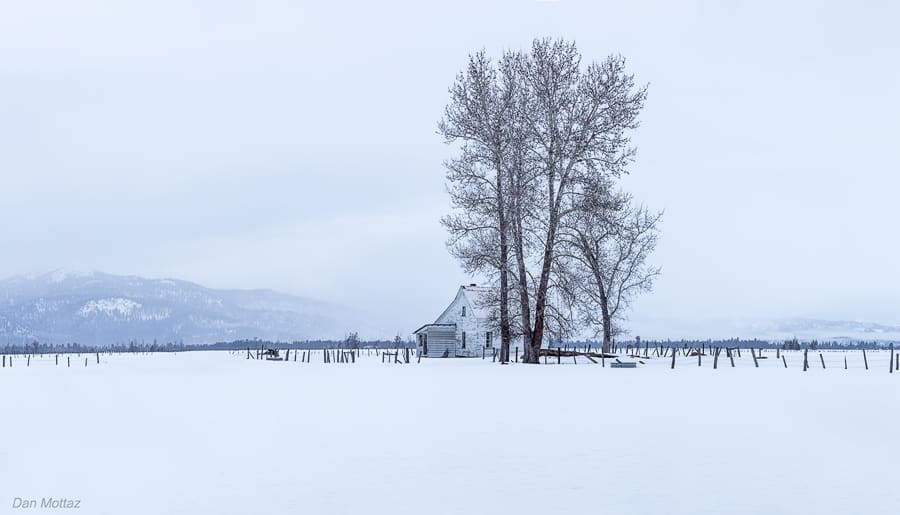
Dan thinks about what he wants to create with previsualization. He uses the controls and filters to make the best image he can in camera. He is diligent and meticulous in editing and then uses still more skills to make excellent prints. That craftsman-like detail is the “How”, but not the “Why” he can make compelling photos. I know he is also a big believer in this quote –
“Don't shoot what it looks like, shoot what it feels like.” – David Alan Harvey
In doing this article I interviewed Dan and the audio recording of that interview is available via this link. We also spent time talking about his thoughts and techniques when making some of his shots displayed here as well as how he felt when making the image and what he was trying to communicate. I have tried to include a bit of that in the image captions, but both there and in what I’ve extracted in writing this article, space limitations required I only use bits from that interview. I strongly encourage you to listen to the whole interview as there is so much more there as well as the discussion on his shots.
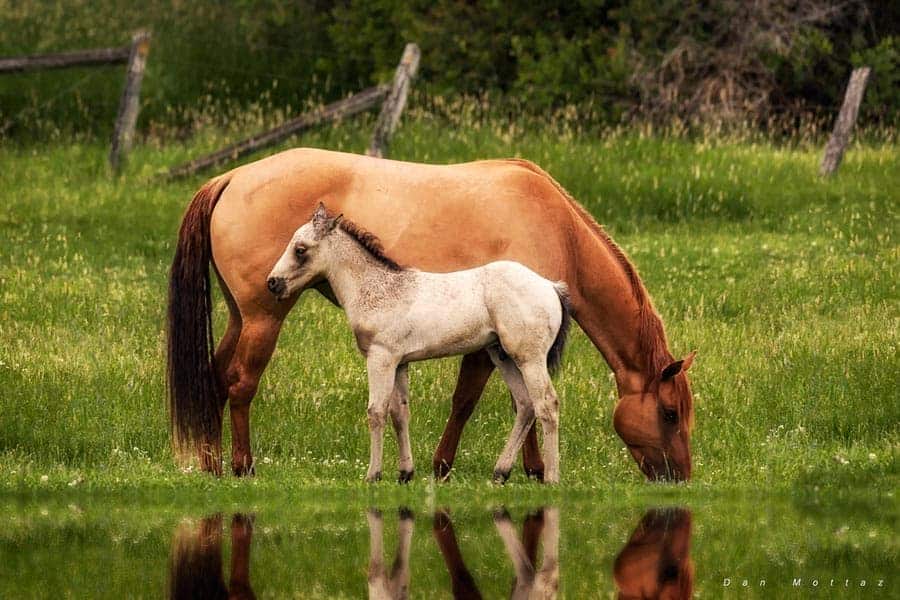
As we wrapped up, Dan got into an area I hadn’t counted on, another reason for his photographic passion and the reason he loves it.
“I really like going out and photographing with my good friends, there’s just something special,” he said. “I’ve heard you say that photography is not a team sport but more of a solo activity between you and your subject and while that might be true, I think there’s a camaraderie in knowing that your buddy is just fifty yards over there also having a great time making photos.”
“For twenty or thirty years I was just bonkers about surfing. I think what was special was going out with my buddies, paddling out to the outside, beyond where the waves are breaking and just sitting on our boards and talking. We could sit out there for hours just bobbing on our boards and often that was better than even riding the waves, just bonding over a common experience,” he said. “Photography is that way too for me. If you can share it with someone it just makes it a billion times greater.”
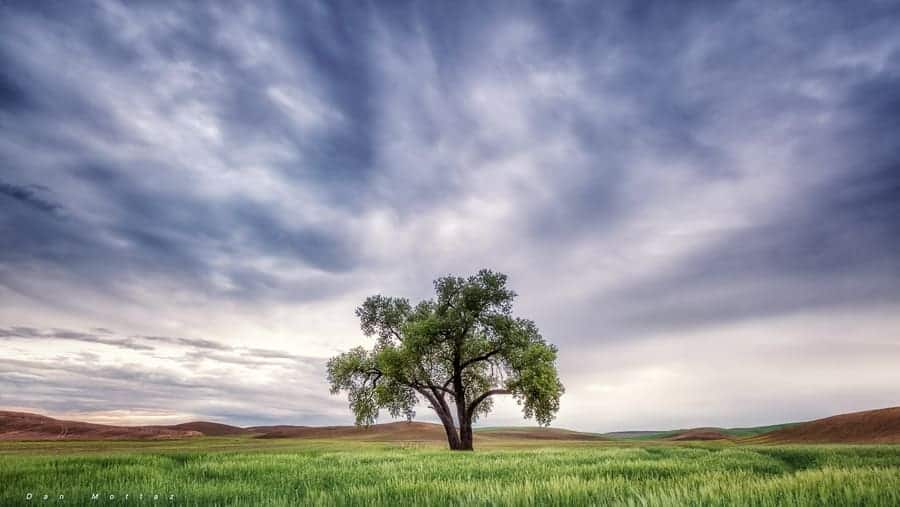
Thanks for sharing your photos, your knowledge, and your friendship with me, (and our readers) Dan. I’m really looking forward to our New England adventure this fall!
See much more of Dan Mottaz’s great photography on his new website – https://jollygiantpictures.smugmug.com/


Very interesting article! I’m nowhere near that caliber of photographer. I do very little editing, and my pictures probably show it.
Find yourself a good photographer to hang out with, someone like Dan to inspire and teach you. Join a local camera club, do some workshops if you can. As he says in the article, a huge part of the joy of photography is sharing it with friends. Hang out with people who are better than you and you will learn much and love what you’re doing.
Great article by two super duper photographers. Being a member of the Boise Camera Club I have learned a lot from both of you as well as the other club members. Thanks for helping me learn something didn’t know that I didn’t know…
you are great man in the photographs
i like your images so a lot,
{{{ jassim khudeir }}}
A great job capturing your jaunt into the mind of a master. Extraordinary photography, insightful lessons, and great perspective that is easy to read, but I’m surmising will take me many years to fully appreciate — thanks, Rick and Dan.
Another great article Rick. Thank you
like your articles
I see that Dan really got into photography with a Pentax; that gives me some hope. I’ve a Pentax I picked up because they’re built like a tank (and my K-70 does not disappoint – even when it may be less painful if it did), but I keep running into what feels like a wall when it comes to gear.
Hearing that your mentor perfected his craft with what may have been “less than ideal” tools gives me a shot of adrenaline and reassurance.
Thanks for the great article, and the ray of hope!
Great article Rick. That monochrome of death Valley is just stunning. My favorite of the group you presented. Thanks for all of the insights and how to’s in your article.
I hope you followed the link to Dan’s Smugmug page. Lots of great photos there and a very nice collection from Death Valley.
Amazing article about an amazing photographer. I know now why Dan has such amazing imagery. He has spent years working hard a the trade. He may have lots of talent but I think all the work and dedication reveals itself in the compelling imagery he produces. Thanks for the article Rick and thank you Master Mottaz for the inspiration you have given all of us.
Dan Mottaz is the Ansel Adams of color.
I hope you followed the link to Dan’s Smugmug page. Lots of great photos there and a very nice collection from Death Valley.
Landscape Photography is something which one have to become good if they have chosen Photography as their full time profession. Clicking perfect Landscape clicks is the art which comes with lot of trial and error. And your guide like this one surely does help to people getting started like me. Thanks for sharing.
Amazing! I also primarily photograph landscapes and can learn a lot from Dan’s techniques. Thank you for the great insight Rick.
You’ve made some really good points there. I checked on the internet for additional information about the issue and found most people will go along with your views on this website.
Astounding article around a stunning picture taker. I know now why Dan has such astonishing symbolism. He has invested years buckling down a the exchange. He may have bunches of ability however I think all the work and commitment uncovers itself in the convincing symbolism he delivers. A debt of gratitude is in order for the article Rick and thank you Master Mottaz for the motivation you have given we all.